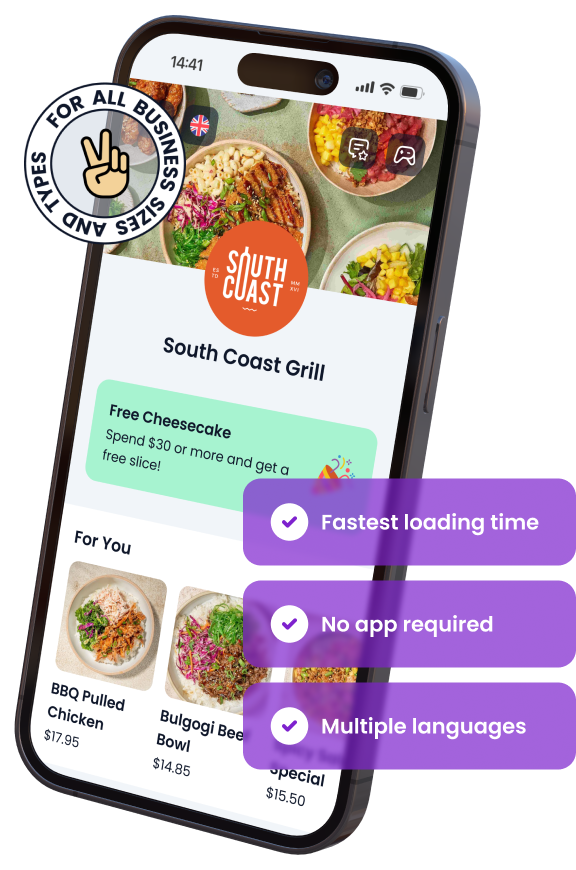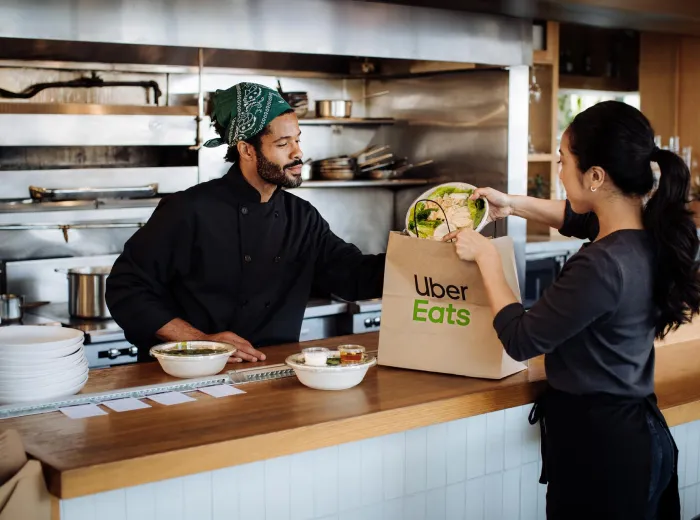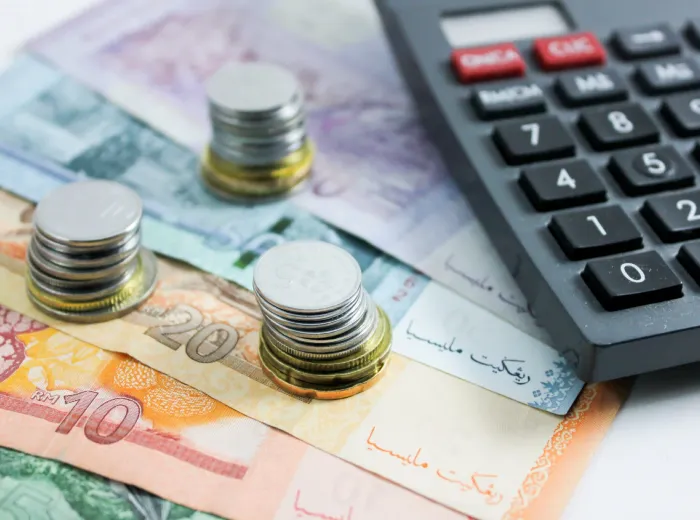

How to Respond to Negative Restaurant Reviews (Actionable Tips & Examples)
In the digital age, online reviews can make or break a restaurant’s reputation. A single negative review, if not handled correctly, can discourage potential customers and damage years of hard work. However, negative feedback isn’t always a bad thing—it can be an opportunity to improve, show your commitment to customer service, and even turn dissatisfied guests into loyal patrons.
Many restaurant owners make the mistake of either ignoring bad reviews or responding in a defensive, emotional manner. Both approaches can do more harm than good. Instead, knowing how to address criticism with professionalism, empathy, and a problem-solving mindset can strengthen your restaurant’s image and reassure future customers.
In this guide, we’ll walk you through a structured approach to handling negative reviews, including practical response strategies, real-world examples, and methods to encourage more positive feedback. Whether you’re dealing with complaints about food quality, service issues, or pricing concerns, this guide will help you craft thoughtful responses that protect your brand and maintain customer trust.
Why Responding to Negative Reviews is Crucial
Negative reviews are inevitable in the restaurant industry, no matter how exceptional your food and service are. However, how you handle them can make all the difference. Ignoring complaints can make potential customers question your credibility, while a well-crafted response can turn a bad situation into an opportunity for growth. Here’s why responding to negative reviews is essential for your restaurant’s success.
The Impact of Negative Reviews on Your Restaurant
A single bad review may not seem like a big deal, but when left unaddressed, it can have significant consequences:
- Loss of potential customers – Studies show that 86% of consumers hesitate to buy from a business with negative reviews.
- Damage to reputation and brand trust – Online reviews shape public perception, and too many unresolved complaints can hurt your credibility.
- Influence on Google rankings and local SEO – Search engines prioritize businesses with high engagement and positive feedback, meaning bad reviews without responses can negatively impact your search visibility.
📌 Takeaway: Negative reviews have a lasting impact on your restaurant’s reputation, customer trust, and even your search engine ranking. Addressing them professionally can minimize damage and maintain your credibility.
Turning a Bad Review into a Business Opportunity
Responding to negative feedback isn’t just about damage control—it’s a chance to improve and win over unhappy customers. Here’s how:
- Improving customer loyalty – A well-handled complaint can impress customers, showing them that their concerns are taken seriously.
- Showcasing excellent customer service – A public response demonstrating professionalism reassures potential diners that you care about guest experiences.
- Winning back unhappy customers – Many negative reviewers simply want to feel heard. A thoughtful response can encourage them to give your restaurant another try.
📌 Takeaway: When managed correctly, negative reviews can help you strengthen customer relationships, improve service quality, and even boost your restaurant’s image.
By recognizing the importance of responding to criticism, you set the stage for positive engagement and long-term success. Now, let’s explore the best practices for handling negative reviews professionally.
The Golden Rules for Handling Negative Reviews
Receiving a negative review can be frustrating, but how you respond can either defuse the situation or make it worse. The key is to approach complaints with professionalism, empathy, and a problem-solving attitude. Follow these golden rules to turn criticism into an opportunity for growth.
Stay Calm and Professional
It’s natural to feel defensive when faced with criticism, especially if you believe the review is unfair. However, responding emotionally can escalate the issue and damage your restaurant’s reputation.
✅ How to stay professional:
- Take a deep breath before responding. Never reply when you’re upset.
- Read the review carefully and assess the validity of the complaint.
- If necessary, step away for a few hours before crafting a thoughtful response.
📌 Takeaway: Keeping a level head ensures you handle the situation rationally and prevent making the problem worse.
Acknowledge and Apologize (Even When It’s Not Your Fault)
Customers want to feel heard. Even if you disagree with their complaint, acknowledging their frustration and offering an apology can go a long way in diffusing their anger.
✅ How to craft an effective apology:
- Start with empathy: “We’re truly sorry that your experience did not meet your expectations.”
- Avoid sounding defensive or dismissive.
- Offer a brief explanation if relevant, but don’t over-explain or blame the customer.
🚫 What NOT to do:
- “That’s not true. Our food is always fresh.” (This can sound confrontational.)
- “Sorry, but you should have told the server earlier.” (This shifts blame onto the customer.)
📌 Takeaway: A sincere acknowledgment of the customer’s disappointment can de-escalate tension and make them more receptive to a resolution.
Offer a Resolution or Compensation (When Necessary)
Not all negative reviews require a refund or discount, but when a legitimate issue arises, providing a resolution shows good faith and encourages customers to give you another chance.
✅ When to offer compensation:
- If there was a clear mistake (wrong order, long wait time, food quality issue).
- If the customer had a truly negative experience that reflects poorly on your business.
🎯 Alternative solutions besides discounts:
- Offering a direct conversation to understand the issue better.
- Inviting the customer back for a second experience.
- Implementing internal changes and letting the customer know their feedback helped.
📌 Takeaway: Thoughtful resolutions show that your restaurant values its customers and is willing to make improvements.
Take the Conversation Offline
While responding publicly is important, some situations are best handled privately to prevent further escalation.
✅ How to move the conversation offline:
- Express your willingness to resolve the issue: “We’d love to make this right for you. Please reach out to us at [email] or [phone number].”
- Avoid engaging in back-and-forth arguments in the review section.
🚫 What NOT to do:
- Do not ask for personal details publicly.
- Do not delete legitimate negative reviews—it can make things worse.
📌 Takeaway: Moving the conversation offline prevents further damage while showing a proactive approach to resolving customer concerns.
Follow Up and Show You Care
A negative review doesn’t have to be the end of the story. Following up with the customer can turn the situation around and even encourage them to update their review.
✅ How to follow up effectively:
- If the customer revisits your restaurant, check in with them personally.
- If they accept a resolution, send a follow-up message to ensure they are satisfied.
- If appropriate, politely ask them to update their review based on their new experience.
📌 Takeaway: A proactive follow-up can turn a frustrated customer into a loyal guest and potentially transform a negative review into a positive one.
Mastering these golden rules ensures that your responses to negative reviews are professional, constructive, and beneficial for your restaurant’s reputation. Next, let’s dive into specific review scenarios and the best ways to handle them.
Common Negative Review Scenarios and How to Respond
Not all negative reviews are the same. Customers may complain about food quality, service, cleanliness, or pricing. Each scenario requires a tailored response to show professionalism, empathy, and a willingness to improve. Below are some of the most common complaints restaurants receive, along with effective response strategies.
"Food Was Cold or Late"
A common complaint in both dine-in and delivery services, cold or delayed food can frustrate customers and lead to negative reviews.
✅ How to respond:
“We sincerely apologize that your meal arrived cold/slower than expected. We strive to provide fresh and timely service, and we regret that we missed the mark. We would love to make it right—please reach out to us at [contact info] so we can offer a resolution.”
🔥 Proactive solutions:
- Ensure food is served immediately after preparation.
- Use insulated packaging for deliveries.
- Partner with reliable delivery services.
- Set realistic wait times and communicate delays to customers.
📌 Takeaway: Acknowledge the issue, apologize sincerely, and provide a solution to retain the customer’s trust.
"Bad Customer Service Experience"
Customers expect friendly and attentive service. If they feel ignored, disrespected, or mistreated, they’re likely to leave a complaint.
✅ How to respond:
“We’re sorry to hear about your experience. Exceptional customer service is our top priority, and we regret that we didn’t meet your expectations. We would love to discuss this further and make it right—please contact us at [contact info].”
🔥 Proactive solutions:
- Train staff in customer service and conflict resolution.
- Encourage a welcoming, patient, and professional approach.
- Address internal service issues immediately.
- Implement a secret shopper program to assess staff performance.
📌 Takeaway: Handling customer service complaints professionally helps build trust and highlights your commitment to guest satisfaction.
"Restaurant Was Dirty or Unhygienic"
Cleanliness is non-negotiable in the food industry. A review about dirty tables, unclean restrooms, or unhygienic food preparation can severely impact your reputation.
✅ How to respond:
“We take cleanliness and hygiene very seriously, and we apologize if your experience did not reflect our high standards. We have addressed this internally to ensure it doesn’t happen again. Thank you for bringing this to our attention.”
🔥 Proactive solutions:
- Conduct daily cleanliness inspections.
- Ensure staff follows strict sanitation guidelines.
- Assign regular cleaning schedules for dining areas and restrooms.
- Display health and safety certifications to reassure customers.
📌 Takeaway: A strong commitment to cleanliness and a prompt response can help rebuild customer confidence.
"Overpriced or Bad Value for Money"
Some customers may feel that your prices are too high for the portion size or quality of food.
✅ How to respond:
“We appreciate your feedback. Our pricing reflects the quality of ingredients and service we provide. However, we understand that value is subjective, and we’ll take your comments into consideration. We hope to serve you again and provide a better experience.”
🔥 Proactive solutions:
- Offer combo meals or loyalty rewards for added value.
- Clearly communicate portion sizes and premium ingredients.
- Ensure pricing aligns with competitors in your area.
- Train staff to explain menu pricing to customers confidently.
📌 Takeaway: Instead of arguing, acknowledge the concern and highlight the quality and value your restaurant provides.
"Dish Didn’t Match the Description or Expectation"
If a customer orders a dish that doesn’t look like what they expected, they might leave a negative review.
✅ How to respond:
“We’re sorry that the dish didn’t meet your expectations. We strive to be as clear as possible with our menu descriptions, but we understand that expectations may vary. We appreciate your feedback and will review our descriptions to improve clarity.”
🔥 Proactive solutions:
- Use clear, accurate descriptions on your menu.
- Include high-quality photos of menu items.
- Train servers to explain dishes thoroughly.
- Offer a menu sampling day to get real customer feedback.
📌 Takeaway: Ensuring transparency in menu descriptions helps set accurate expectations and reduces the likelihood of complaints.
Final Thoughts on Handling Negative Reviews
Every negative review is an opportunity to improve and show customers you care. The way you respond can make a huge difference in retaining customers and maintaining your reputation. By addressing concerns professionally, offering solutions, and continuously improving your restaurant, you can turn unhappy guests into loyal ones.
Now, let’s discuss when it’s best to ignore or flag a review rather than respond.
When to Flag or Ignore a Negative Review
Not all negative reviews deserve a response. Some may be fraudulent, abusive, or simply not worth engaging with. Knowing when to flag, ignore, or respond can save you time and protect your restaurant’s reputation. Here’s how to handle different types of questionable reviews effectively.
Identifying Fake Reviews
Some reviews are not written by real customers but by competitors, disgruntled former employees, or internet trolls. Identifying and addressing fake reviews is crucial to maintaining your restaurant’s credibility.
✅ Signs a review may be fake:
- No record of the customer’s visit – Check your reservation or POS system.
- Vague or generic language – Fake reviews often lack details about the visit.
- Multiple bad reviews in a short period – A sudden influx of negativity can signal a targeted attack.
- Reviewer has only left negative reviews – Check their profile; fake reviewers often leave bad reviews for multiple businesses.
✅ What to do if you suspect a fake review:
- Report it to the platform – Google, Yelp, and TripAdvisor allow you to flag reviews.
- Respond professionally – If the review remains, reply with a neutral statement like:
“We take customer feedback seriously, but we do not have a record of your visit. Please contact us directly so we can resolve any concerns.” - Encourage real customers to leave genuine reviews – This helps push down fake ones.
📌 Takeaway: Fake reviews can harm your reputation, but platforms have tools to help remove them. Flagging and responding carefully can prevent further damage.
When Not to Engage with a Review
Some reviews are left by internet trolls who are only looking to provoke a reaction. Engaging with these reviews can escalate the situation and waste your time.
🚫 When to ignore a review:
- It’s clearly a joke or sarcastic rant.
- It contains offensive, discriminatory, or inflammatory language.
- The reviewer repeatedly leaves negative comments on different platforms.
✅ How to handle such reviews:
- If the review violates platform guidelines, report it immediately instead of engaging.
- If it’s borderline but not removable, let it be—most customers can recognize an unreasonable review.
📌 Takeaway: Engaging with trolls or extreme negativity can backfire. Instead, focus on responding to genuine complaints and maintaining a strong online reputation.
Knowing When Silence is the Best Response
Sometimes, even a real customer complaint doesn’t require a response. If the review is overly emotional but not entirely negative, it might be best to let it stand.
✅ When not to respond:
- The review is neutral or mixed (e.g., “Food was okay, service could be better”).
- The complaint is minor and does not call for action (e.g., “The restaurant was a little noisy”).
- The reviewer seems unwilling to have a constructive conversation.
🚀 Alternative approach:
- Instead of responding publicly, focus on improving internally.
- If the review contains useful feedback, use it to enhance your operations.
📌 Takeaway: Not every review requires a reply. Prioritize meaningful engagement and avoid fueling unnecessary disputes.
By knowing when to flag, ignore, or engage with a negative review, you can protect your restaurant’s online reputation while focusing on genuine customer concerns. Now, let’s explore how to encourage more positive reviews to balance out the negativity.
Encouraging More Positive Reviews to Balance Negativity
Negative reviews can impact your restaurant’s reputation, but a steady stream of positive feedback can outweigh the occasional complaint. The best way to maintain a strong online presence is to encourage happy customers to share their experiences. Here’s how to do it effectively.
The Power of Proactive Reputation Management
Most satisfied customers don’t leave reviews unless they are asked. Encouraging positive feedback requires a proactive approach.
✅ Why positive reviews matter:
- Boosts your overall rating and attracts more customers.
- Improves your restaurant’s ranking in Google search results.
- Shows potential guests that most customers enjoy your food and service.
🚀 How to get ahead of negative feedback:
- Train staff to identify happy customers and subtly encourage reviews.
- Make it easy for customers to leave feedback with QR codes and direct links.
- Regularly monitor reviews to spot trends and improve service before complaints arise.
📌 Takeaway: A proactive approach ensures your best customers contribute to your online reputation, rather than just the unhappy ones.
Strategies to Get More Positive Reviews
A simple, well-timed request can significantly increase the number of good reviews your restaurant receives.
✅ Best ways to encourage reviews:
- Ask at the right moment:
- After a great dining experience when customers express satisfaction.
- When regulars visit—loyal guests are often happy to support your business.
- Use in-store signage and menus:
- Add a note: “Loved your meal? Share your experience on [Google/Yelp]!”
- Place QR codes on receipts, tables, or your digital menu for easy access.
- Follow up with online orders:
- Send an email or SMS with a link asking for feedback.
- Offer a friendly message: “We’d love to hear about your experience!”
- Leverage your loyalty program:
- Give incentives like discounts or exclusive offers for leaving feedback (without violating review platform rules).
🚫 What NOT to do:
- Never offer direct payments or bribes for reviews (it violates platform policies).
- Avoid pressuring customers—make it optional and natural.
📌 Takeaway: Small, well-placed requests can make a big difference in increasing positive reviews.
Leveraging Social Media and User-Generated Content
Your social media presence can play a big role in generating positive online feedback.
✅ How to use social media to boost reviews:
- Encourage check-ins and tags: Offer small perks for customers who tag your restaurant in their posts.
- Share positive reviews on Instagram & Facebook: Reposting happy customer reviews encourages others to leave their own.
- Engage with happy customers: Comment on their posts and thank them for visiting.
- Run review-based giveaways: “Leave a review and enter to win a free dessert next visit!”
📌 Takeaway: When customers see others praising your restaurant, they’ll be more inclined to share their own experiences.
By actively encouraging positive feedback, you can ensure that glowing reviews outshine any occasional negativity. Next, let’s explore the best tools and strategies for managing your online reputation effectively.
How to Monitor and Manage Your Online Reviews Efficiently
Keeping track of customer reviews across multiple platforms can be overwhelming, but a well-organized review management strategy ensures you stay on top of feedback and maintain a positive reputation. Here’s how to efficiently monitor and manage your online reviews.
Tools and Software for Reputation Management
Manually checking review platforms every day isn’t practical, but automated tools can make the process seamless.
✅ Best review tracking tools for restaurants:
- Google Alerts – Get notified when your restaurant is mentioned online.
- ReviewTrackers – Monitors multiple review platforms and consolidates feedback.
- Hootsuite or Sprout Social – Helps manage social media comments and mentions.
- Yelp for Business & Google My Business Dashboard – Provides direct access to customer reviews.
🚀 Why use review monitoring tools?
- Saves time by aggregating reviews in one place.
- Alerts you instantly about new feedback, allowing quick responses.
- Provides analytics to track trends and customer sentiment over time.
📌 Takeaway: Using review management software streamlines the process, ensuring no review goes unnoticed.
Setting Up a Review Response Policy for Your Staff
Having a clear response policy ensures consistency in how reviews are handled, whether they’re positive or negative.
✅ Steps to create a review response policy:
- Assign a team member to handle reviews – A dedicated person ensures timely and professional responses.
- Set response time guidelines – Aim to reply to all reviews within 24-48 hours.
- Create templates for common scenarios – Having pre-written responses for negative, positive, and neutral reviews speeds up the process.
- Maintain a professional tone – All responses should be polite, customer-focused, and solution-oriented.
- Track and learn from feedback – Regularly review trends in complaints to identify areas for improvement.
🚫 What NOT to do:
- Ignore reviews or only respond to positive ones.
- Use copy-paste responses without personalization.
- Engage in arguments or defensive replies.
📌 Takeaway: A structured review response policy ensures professionalism, consistency, and a proactive approach to customer feedback.
Measuring Success: Tracking Review Trends and Customer Sentiment
Beyond responding to individual reviews, analyzing patterns can provide valuable insights into your restaurant’s strengths and weaknesses.
✅ How to track review trends:
- Look for recurring themes – If multiple customers mention slow service, it may be time to retrain staff.
- Monitor ratings over time – A rising average star rating means your response efforts are working.
- Use sentiment analysis tools – Some platforms analyze the emotional tone of reviews to gauge overall satisfaction.
🚀 Benefits of tracking trends:
- Helps you identify areas for improvement (menu changes, service upgrades, etc.).
- Allows you to measure the effectiveness of your responses and customer recovery efforts.
- Ensures you stay ahead of potential reputation issues before they escalate.
📌 Takeaway: Tracking trends in reviews helps refine your restaurant’s operations and customer service strategy.
By using the right tools, setting up clear response policies, and analyzing trends, you can efficiently manage your restaurant’s online reputation and stay ahead of potential issues. Next, let’s explore real-world examples of restaurants that turned negative reviews into success stories.
Case Studies: Restaurants That Handled Negative Reviews Well
Some of the best examples of reputation management come from restaurants that turned negative reviews into opportunities. A well-crafted response can not only win back the original customer but also impress potential diners who read the exchange. Let’s explore real-life cases where restaurants successfully handled bad reviews and turned them into success stories.
Example 1: A Restaurant That Won Back a Critic
📍 Scenario: A diner left a 1-star review after experiencing slow service and receiving the wrong order. They were frustrated that the server seemed overwhelmed and didn’t check back after delivering the food.
✅ How the restaurant responded:
- The owner personally replied within hours, acknowledging the guest’s frustration.
- They apologized without excuses and explained that the restaurant was unusually busy that night.
- They offered a solution: a free meal if the customer returned, with assurance that service standards had been reinforced.
🎯 Outcome:
- The customer updated their review to a 4-star rating after their next visit, praising the restaurant’s effort to make things right.
- The owner’s response showed professionalism and care, earning positive engagement from other potential customers.
📌 Key Lesson: A quick, personalized response with a clear resolution can turn an unhappy customer into a loyal guest.
Example 2: A Viral Negative Review That Boosted Business
📍 Scenario: A food blogger with a large following left a detailed negative review about a restaurant’s portion sizes and pricing, calling it “overpriced for what you get.”
✅ How the restaurant responded:
- They acknowledged the concern in a polite and respectful manner.
- They explained their pricing model, emphasizing high-quality ingredients and sourcing from local farms.
- Instead of arguing, they invited the reviewer back for a behind-the-scenes kitchen tour and meal on the house.
🎯 Outcome:
- The blogger accepted the invite and posted a follow-up review praising the restaurant’s transparency.
- The story gained traction on social media, bringing in new customers who were curious about the restaurant’s farm-to-table approach.
📌 Key Lesson: Instead of being defensive, turning criticism into a conversation can win over influencers and generate positive exposure.
Example 3: Handling a Hygiene Complaint with Transparency
📍 Scenario: A customer left a 2-star review, complaining about dirty tables and unclean restrooms.
✅ How the restaurant responded:
- They apologized sincerely and thanked the reviewer for bringing the issue to their attention.
- They explained that they had recently changed cleaning staff and were already implementing stricter sanitation checks.
- They invited the customer to return, offering a discount as an apology.
🎯 Outcome:
- The customer updated their review, noting that the restaurant took action.
- Other diners saw the response and appreciated the restaurant’s commitment to cleanliness.
📌 Key Lesson: Acknowledging and fixing operational issues publicly reassures customers that you take their concerns seriously.
Final Thoughts on Learning from Success Stories
These case studies prove that how you respond to criticism matters just as much as the complaint itself. A well-handled review:
✅ Shows accountability and professionalism.
✅ Provides transparency and builds trust.
✅ Turns a bad experience into positive word-of-mouth marketing.
By learning from these real-world examples, you can craft responses that turn challenges into opportunities and protect your restaurant’s reputation. Now, let’s wrap up with the key takeaways on handling negative reviews effectively.
Final Thoughts on Handling Negative Reviews Effectively
Negative reviews are an unavoidable part of running a restaurant, but they don’t have to be damaging. When handled correctly, even the most critical feedback can become an opportunity to demonstrate excellent customer service, regain trust, and improve your business operations.
Key Takeaways for Managing Negative Reviews
✅ Always respond professionally and promptly – A well-crafted response shows you care about your customers and are committed to improvement.
✅ Acknowledge and apologize – Even if the complaint feels unfair, acknowledging the customer’s experience helps diffuse tension.
✅ Offer a solution when appropriate – Whether it’s a discount, a free meal, or simply a promise to improve, providing a resolution can turn an unhappy customer into a repeat guest.
✅ Know when to ignore or flag reviews – Fake, abusive, or unreasonable reviews shouldn’t take up your time—flag them if necessary and focus on genuine feedback.
✅ Encourage more positive reviews – A steady flow of good reviews will outweigh the occasional bad one. Train staff to ask for feedback and make it easy for satisfied customers to leave reviews.
✅ Use review management tools – Automate tracking and responses to save time and ensure no feedback goes unnoticed.
Turning Negative Feedback into a Positive Reputation
A single bad review won’t destroy your business, but your response to it can define your brand. By treating online reviews as a two-way conversation, you can strengthen customer loyalty, build credibility, and even attract more diners.
Instead of fearing bad reviews, embrace them as insightful feedback that helps your restaurant grow. The best restaurants aren’t perfect—they’re the ones that listen, adapt, and improve based on customer input.
With the right approach, every review—good or bad—becomes an opportunity to enhance your restaurant’s reputation and long-term success.
Key Takeaways
Handling negative restaurant reviews effectively is essential for maintaining a strong reputation and customer trust. A well-thought-out response strategy can turn criticism into an opportunity for growth and positive engagement. Here are the most important lessons from this guide:
✅ Negative reviews impact your restaurant’s reputation and revenue – Ignoring them can deter potential customers, while responding professionally can rebuild trust.
✅ Stay calm, acknowledge the complaint, and apologize professionally – Even when you disagree, showing empathy can diffuse the situation.
✅ Offer a resolution when necessary – Refunds, discounts, or inviting customers back can turn an unhappy diner into a loyal one.
✅ Move heated discussions offline – Avoid public arguments by inviting dissatisfied customers to contact you directly for a resolution.
✅ Know when to flag or ignore a review – Fake, spammy, or abusive reviews should be reported instead of engaged with.
✅ Encourage satisfied customers to leave positive reviews – Train staff to ask for feedback, use QR codes, and engage with guests on social media.
✅ Use reputation management tools to track and analyze reviews – Platforms like Google Alerts, ReviewTrackers, and Yelp for Business can help streamline the process.
✅ Case studies show that well-handled complaints can boost customer trust – A professional and transparent approach can even turn negative publicity into a marketing opportunity.
Negative reviews don’t have to be a threat—they can be a valuable source of insight and a chance to showcase excellent customer service. By responding thoughtfully and proactively, you can strengthen your restaurant’s reputation and create long-term success.
Frequently Asked Questions on Responding to Negative Restaurant Reviews
Enhance your restaurant’s reputation by mastering how to respond to negative reviews. Below are some of the most commonly asked questions—and answers—your readers are likely searching for.
How should I respond to a negative restaurant review without sounding defensive?
Begin with empathy by acknowledging the guest’s disappointment and offering a sincere apology—even if you don’t agree with their perspective. Avoid blaming or defending; instead, express regret (e.g., “We’re truly sorry your experience didn’t meet expectations”), reassure them you’re addressing the issue, and invite them to contact you for a resolution.
When is it appropriate to offer compensation for a negative review?
Offer a resolution—such as a refund, discount, or invitation to return—only when a mistake clearly occurred (e.g., wrong order, poor service, hygiene lapse). Aim to make it an opportunity to rebuild trust rather than a defensive reaction.
Should I reply publicly or take the conversation offline when handling a bad review?
Always respond publicly to demonstrate professionalism and empathy, but then invite the reviewer to take the conversation offline for specific details or resolution. Phrases like “Please contact us directly so we can make this right” help balance transparency with discretion.
How do I know when to ignore or flag a negative review instead of responding?
If a review seems fake—vague, suspiciously timed, or from someone with only negative feedback—or is abusive or troll-like, it’s often best to flag rather than engage. If the content violates policy, report it; otherwise, let it stand without feeding negativity.
What are effective ways to encourage more positive reviews to outweigh the negative ones?
Proactively ask happy customers to share their experiences—especially directly after a great visit. Use signage, QR codes, receipts, or loyalty incentives (within platform rules) to make it easy. A steady stream of authentic positive reviews enhances your restaurant’s credibility and search visibility.
ABOUT THE AUTHOR
Erkin Coban
Your Customers Deserve The Best
And we got Menuviel for them.
The fastest and easy-to-use online QR menu with 12+ unique features. Choose Menuviel and elevate your service quality to the next level.
Use free for the first 30 days.

In This Article

Free AI Tools for Restaurants
TRY NOW ➜

Collect positive Google reviews
You can boost your restaurant’s credibility by effortlessly gathering Google reviews directly through your menu.





